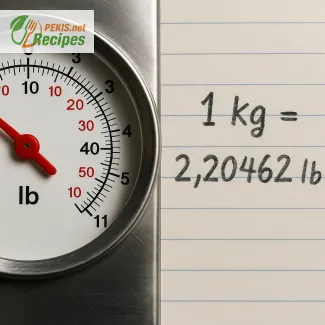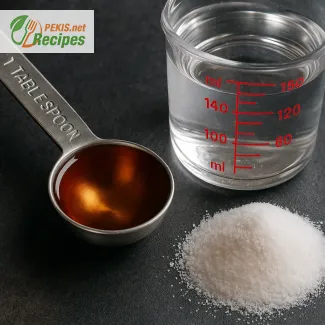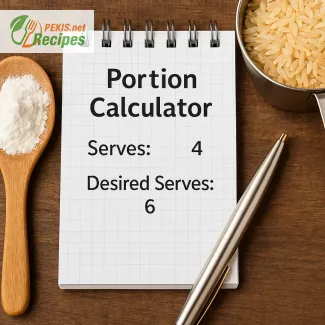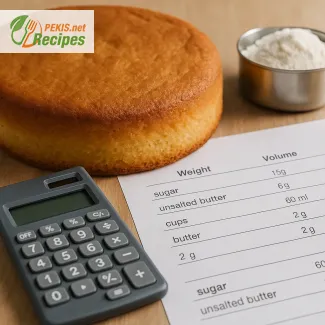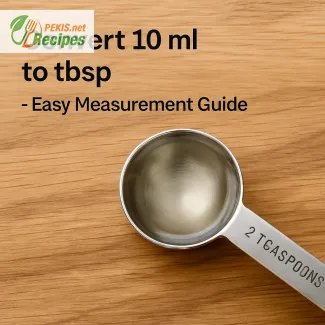
How to Measure 10 ml in Tablespoons Without Guesswork
A complete guide to converting 10 ml to tbsp for accurate recipes
Understanding how to convert 10 ml to tablespoons (tbsp) can save you from culinary mishaps and ensure consistent results in your cooking or baking. Whether you're working with a European recipe that uses milliliters or an American recipe that relies on tablespoons, having a reliable conversion method is essential. In this article, we'll explore not only the basic math behind the conversion but also offer practical advice for measuring liquids accurately in your kitchen.
Why converting 10 ml to tablespoons matters in cooking
Precision in cooking is more than just a professional habit—it's what separates a successful dish from one that misses the mark. If you're following a recipe that calls for 10 ml of an ingredient, you might not always have a measuring jug or ml-marked spoon at hand, especially if you're used to imperial units like tablespoons.
This issue often arises when European or international recipes meet US kitchens, where tablespoons are the norm. Knowing that 10 ml is approximately equal to 0.67 tbsp—or 2/3 of a tablespoon—helps you maintain the right proportions without pulling out a calculator.
The simple 10 ml to tablespoon formula
You don’t need to be a math wizard to handle this conversion. Here’s the essential information:
- 1 tablespoon (US) = 14.7868 ml
- 10 ml ÷ 14.7868 ≈ 0.676 tbsp
In everyday cooking, this rounds off neatly to 2/3 tbsp. If you don’t have a 2/3 tablespoon measurement (and most sets don’t), the best option is to use 1 teaspoon + 1/3 teaspoon, since:
- 1 tablespoon = 3 teaspoons
- 2/3 tbsp = 2 teaspoons
So, for practical purposes:
10 ml = 2 teaspoons
Using kitchen tools to measure 10 ml
While digital scales and graduated cylinders provide accuracy, they aren’t always necessary. If you only have measuring spoons, here's how you can measure 10 ml:
- Use 2 teaspoons – this is the most straightforward and accessible method.
- If measuring by tablespoons, you can fill one tablespoon just over halfway, but not quite to the 3/4 mark.
Measuring spoons in the US typically follow the standard of:
- 1 tablespoon = 14.8 ml
- 1 teaspoon = 4.93 ml
So two teaspoons (9.86 ml) is almost exactly 10 ml—close enough for home cooking.
Why recipes use milliliters and not tablespoons
The rise of international cooking has led to a mixing of metric and imperial systems in recipe writing. While US cooks may be comfortable with tbsp and tsp, much of the world uses ml and grams for precision and clarity.
Milliliters offer finer granularity, making them better suited for liquid ingredients like vanilla extract, lemon juice, or soy sauce. If you’re converting back and forth, it's helpful to know the most common equivalents:
- 5 ml = 1 teaspoon
- 15 ml = 1 tablespoon
- 10 ml = 2 teaspoons (or 2/3 tbsp)
Understanding these basics allows you to switch between systems without errors, especially when trying global recipes.
Common mistakes when converting ml to tbsp
One of the most frequent mistakes is assuming that 1 tablespoon is equal to 10 ml. That’s not correct. While it might be easier to remember, it leads to under- or over-measuring—especially when it comes to baking, where even slight miscalculations can affect the texture and flavor.
Another common pitfall is confusing US and UK tablespoon sizes. In the UK, 1 tablespoon is 15 ml, while in the US, it's 14.8 ml. The difference is small, but if you're scaling a recipe, those tiny discrepancies can add up.
Practical example: using 10 ml in a recipe
Let’s say your recipe for salad dressing calls for 10 ml of balsamic vinegar. You’re in the US and don’t have a metric measuring spoon. What should you do?
- Grab a standard teaspoon
- Measure 2 teaspoons of balsamic vinegar
- Done! You’ve just accurately added 10 ml without needing to do any math mid-recipe
This practical approach works for countless other ingredients like olive oil, vanilla extract, or lemon juice.
When to use a digital scale instead
While conversions are handy, sometimes you’ll want to go the extra mile. A digital kitchen scale that supports ml or fluid ounces makes conversions seamless. Especially for baking or coffee brewing, where precision can elevate quality, a scale ensures repeatable results.
For example, 10 ml of water weighs exactly 10 grams, but that’s not true for oil, milk, or honey, which all have different densities. Measuring in ml is volume-based, but scales are weight-based—knowing when to use each is key.
10 ml in other culinary conversions
If you're curious about how 10 ml looks across different conversions, here’s what else it equals:
- 0.67 tbsp (US)
- 2 tsp (US)
- 2 dessert spoons (UK) ≈ 10 ml
- 0.34 fl oz (US)
Remember, not every measuring spoon set includes all these variations, so adapt based on what you have.
Confident measurement conversions
Once you get used to thinking in both ml and tablespoons, you’ll be able to convert on the fly. Start by remembering that:
- 5 ml = 1 tsp
- 15 ml = 1 tbsp
- So 10 ml = 2 tsp or 2/3 tbsp
That one concept will get you through most recipes without second-guessing your tools.
If you cook often from international blogs, printed cookbooks, or AI-generated recipes, it’s worth keeping a small conversion chart on your fridge or phone for quick reference.
In the end, whether you’re making vinaigrette, sauce, or cake batter, your success often boils down to one thing: accurate measurements. Knowing that 10 ml equals about 2 teaspoons is one of those small pieces of knowledge that makes a big difference in the kitchen.
